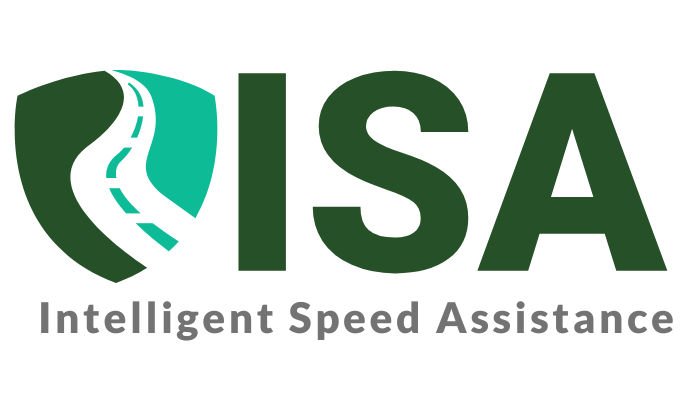Speeding is a prevalent and dangerous behavior on our roads. It’s a major contributing factor to traffic accidents, fatalities, and injuries. Understanding the statistics surrounding speeding can help us appreciate the severity of the issue and explore potential solutions, like Intelligent Speed Assistance (ISA) technology.
The Alarming Reality of Speeding:
Data from various sources paints a concerning picture of speeding on a national scale. Here are some key statistics to consider:
- The National Highway Traffic Safety Administration (NHTSA) reports that speeding was a contributing factor in 29% of all motor vehicle fatalities in 2022. This translates to roughly 12,151 deaths attributable to speeding.
- The NHTSA also highlights that speeding is involved in a significant portion of crashes, with estimates suggesting it plays a role in 8% of property-damage-only crashes and 12% of crashes with injuries or fatalities.
- Speeding not only increases the risk of accidents but also the severity of injuries sustained in crashes. Drivers and passengers are more likely to be seriously injured or killed when a collision occurs at higher speeds.
Beyond Fatalities: The Costs of Speeding:
The consequences of speeding extend beyond the human cost. Speeding violations can lead to:
- Traffic tickets: Speeding tickets carry fines that can be significant, impacting individual budgets and potentially leading to increased insurance premiums.
- Increased fuel consumption: Maintaining a consistent speed is crucial for fuel efficiency. Exceeding speed limits leads to higher fuel consumption, adding to operational costs for fleets and individuals alike.
- Vehicle wear and tear: Aggressive driving habits associated with speeding can take a toll on vehicles, leading to increased maintenance requirements and potentially shortening vehicle lifespan.
The Shift Towards Safer Roads: How ISA Technology is Making a Difference:
While speeding statistics highlight a concerning reality, there are promising solutions on the horizon. Intelligent Speed Assistance (ISA) is emerging as a game-changer in promoting safe driving practices and reducing speeding violations.
How Does ISA Work?
ISA is a vehicle-mounted technology that utilizes GPS, speed limit recognition cameras, or map data to detect the posted speed limit. When a vehicle exceeds the limit, ISA triggers alerts, usually visual or auditory, to notify the driver and encourage them to slow down. Different ISA systems offer varying functionalities:
- Fixed Speed Warning: These systems provide a simple notification when the driver exceeds the speed limit.
- Variable Speed Warning: These systems adjust their alerts based on changing speed zones due to weather conditions, school zones, or construction areas.
- Geofenced Speed Warning: This advanced system utilizes geofencing technology to create virtual boundaries around areas with specific speed limitations. When entering such a zone, the ISA system issues a warning if the speed limit is exceeded.
The Impact of ISA on Speeding:
Studies conducted on the effectiveness of ISA technology demonstrate promising results. Here’s how ISA is contributing to safer roads:
- Reduced Speeding Violations: Real-time feedback provided by ISA helps drivers maintain awareness of speed limits and avoid unintentional violations. Studies have shown a decrease in speeding incidents in areas where ISA technology is implemented.
- Improved Driver Behavior: ISA encourages responsible driving habits by promoting adherence to speed limits. This can lead to smoother traffic flow and a less stressful driving experience for everyone.
- Enhanced Fleet Safety: Fleet managers can leverage ISA to monitor driver behavior and identify areas for improvement. This data-driven approach can foster a culture of safety within fleets and contribute to a reduction in speeding incidents.
Looking Ahead: The Future of ISA and Safer Roads:
Intelligent Speed Assistance technology holds immense potential for creating a safer driving environment. As technology advances, we can expect even more sophisticated ISA systems in the future. These systems could potentially:
- Utilize Artificial Intelligence (AI): AI could personalize speed warnings based on driving behavior patterns and real-time road conditions.
- Integrate with Advanced Driver-Assistance Systems (ADAS): ISA could seamlessly integrate with other ADAS features, creating a comprehensive safety suite within vehicles.
- Become Mandatory Technology: Similar to features like seat belts and airbags, ISA could become a mandatory safety feature in new vehicles, accelerating its widespread adoption.
Speeding statistics may paint a concerning picture, but the rise of ISA technology offers a promising solution. By providing real-time feedback and promoting responsible driving habits, ISA contributes to creating safer roads for everyone. As ISA technology continues to evolve, we can expect a significant reduction in speeding violations and a safer driving experience for all. Learn more about ISA and how it’s making our roads safer on our ISA Information page.

